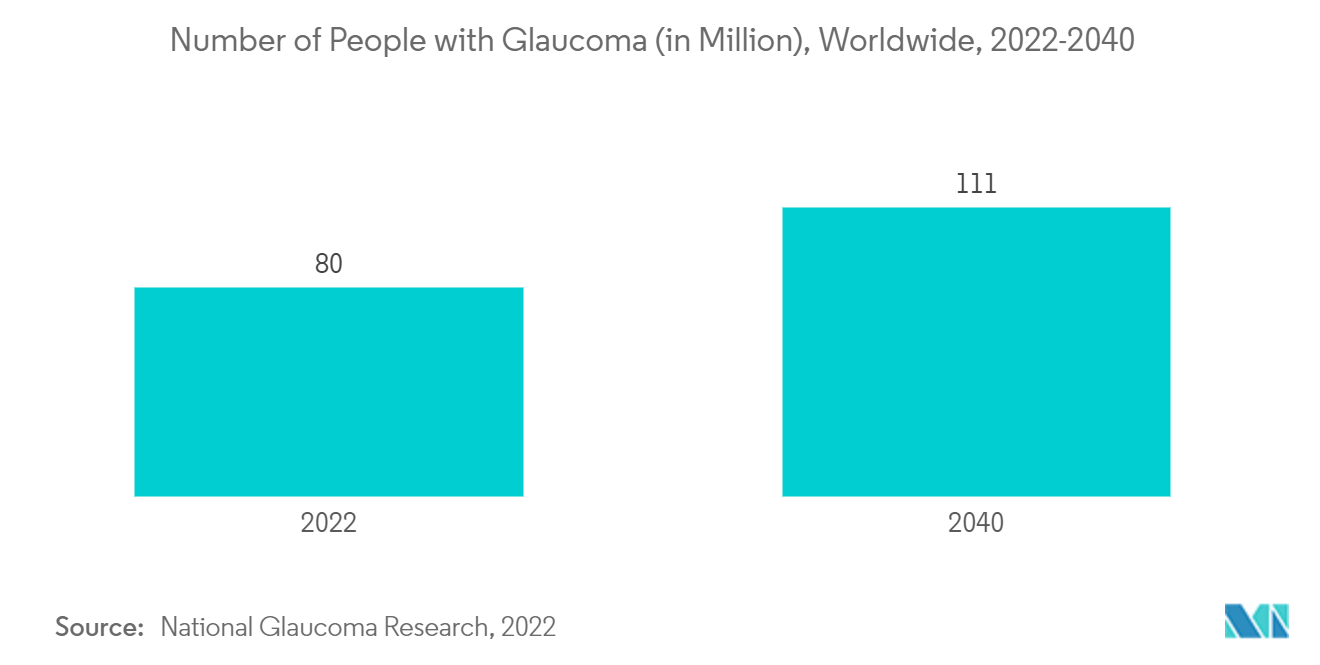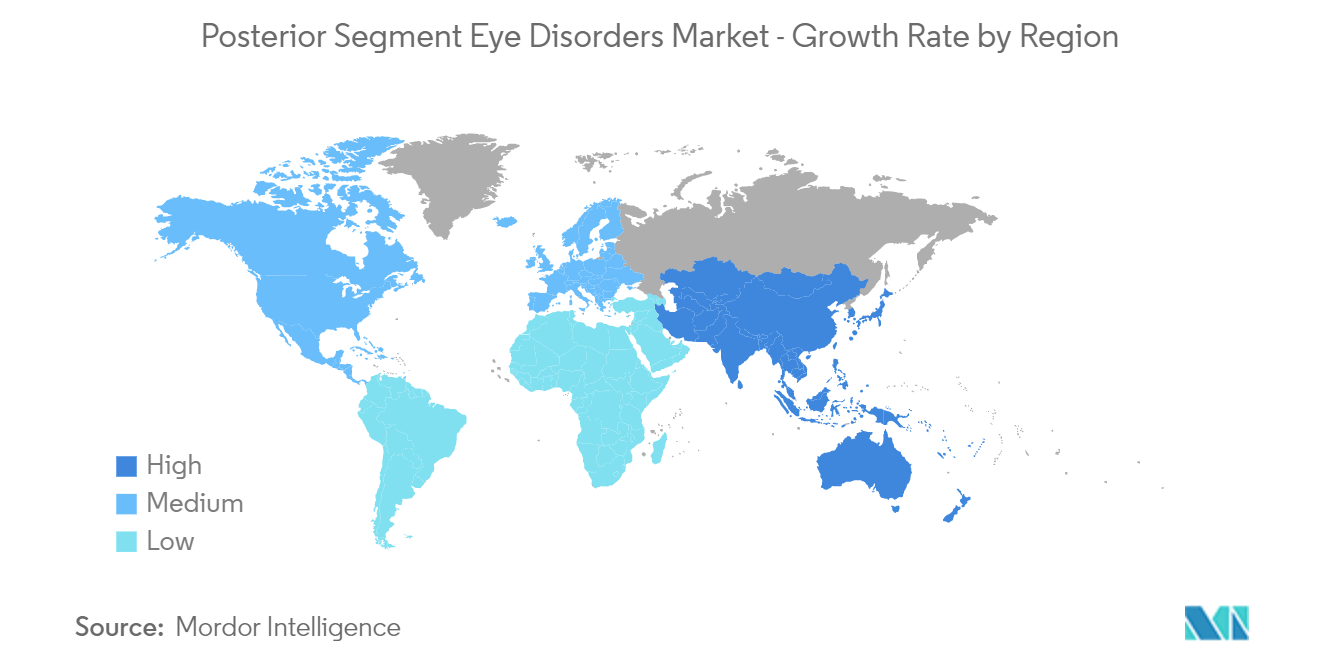Market Trends of Posterior Segment Eye Disorders Industry
Small Molecules by Drugs Segment is Expected to Hold a Significant Market Share Over the Forecast Period
Compounds with a low molecular weight that can change the biochemical processes for treating diseases are known as small-molecule drugs. Factors such as the growing burden of eye disorders, increasing R&D for the innovation of new therapeutics, and the launch of products are driving segmental growth.
As per the study published in November 2021 by the National Library of Medicine, around 103.12 million adults were living with diabetic retinopathy globally in 2020, and the number is projected to increase to 160.50 million by 2045. Thus, the growing burden of eye disorders is likely to increase the demand for their treatment, thus driving the segment.
The market segment is also boosted by increasing clinical studies and collaboration among the market players. For instance, in December 2021, AbbVie Inc. (Allergan) received approval for VUITY (pilocarpine HCl ophthalmic solution) 1.25% by the US FDA to treat presbyopia and be available by prescription in pharmacies in the United States. Such launches are expected to drive the growth of the market segment. Thus, the small molecules segment is expected to project growth over the forecast period.

North America is Expected to Hold a Major Market Share Over the Forecast Period
North America is anticipated to have significant market growth owing to its well-established healthcare infrastructure, the presence of key market players, new product launches, and the rising burden of posterior eye disorders in the region.
The growing mergers and acquisitions are one of the key reasons for the market's growth. For instance, in November 2021, Alcon acquired Ivantis Inc. to expand its product portfolio by adding the Hydrus micro stent for surgical glaucoma. Hydrus micro stent is one of the key products in Canada. With this acquisition, Alcon expanded its presence in the market.
In September 2021, Zilia Inc. received USD 3.16 million through seed financing. This would aid the company's entry into ocular diagnostics by increasing the number of posterior segment eye disorders diagnoses. The product can measure oxygen saturation in the eye, an important biomarker for eye diseases such as glaucoma, diabetic retinopathy, and age-related macular degeneration.
Hence, owing to such factors, the North American market is expected to have faster growth over the forecast period.


